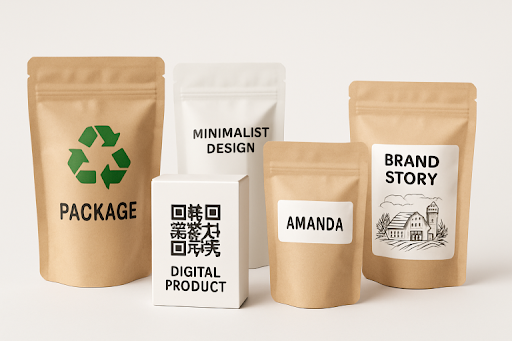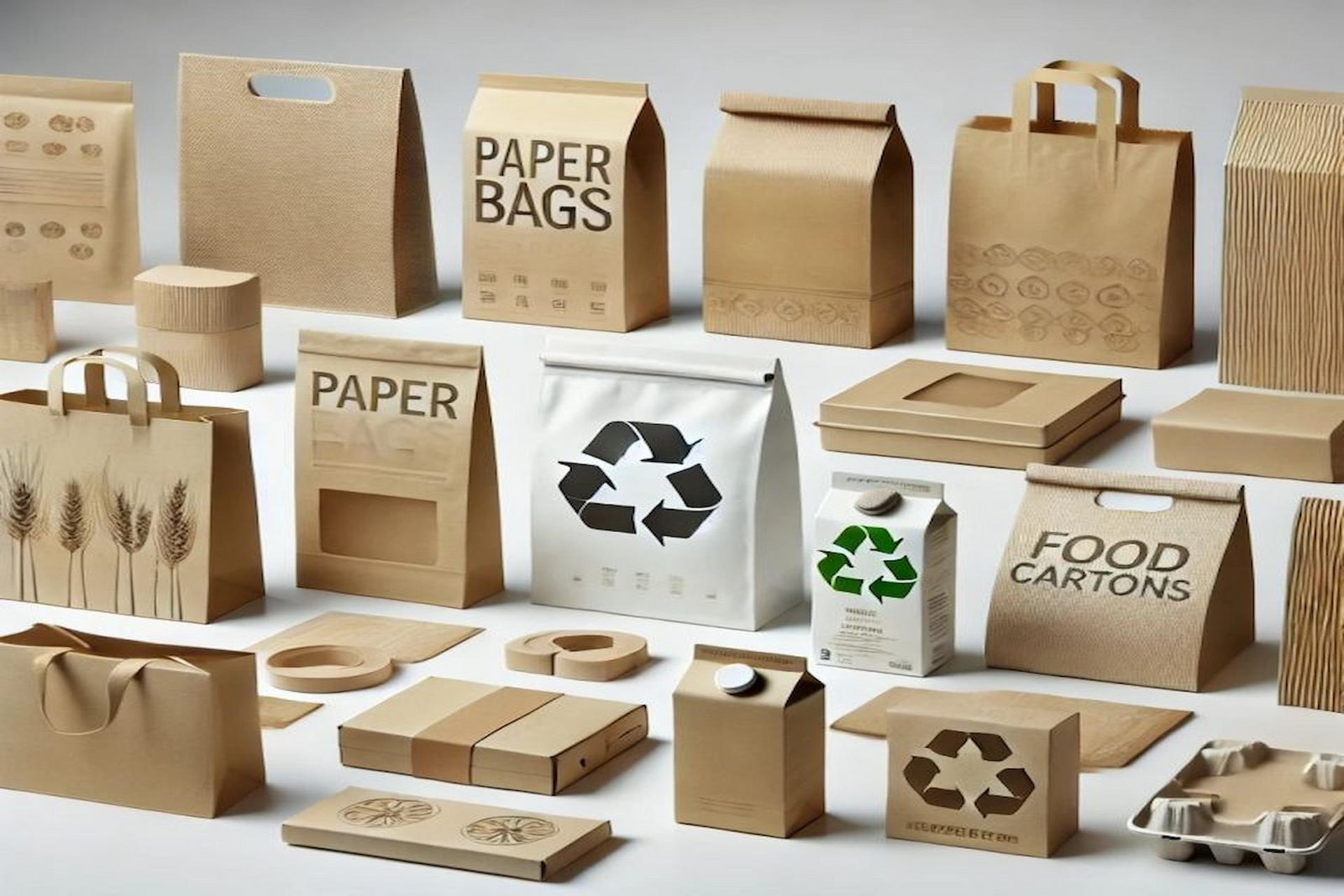Key Takeaways
- Innovative packaging can significantly influence consumer purchasing decisions.
- Eco-friendly materials appeal to environmentally conscious buyers.
- Minimalist designs can convey sophistication and clarity.
- Interactive elements enhance consumer engagement.
- Personalized packaging fosters a deeper connection with customers.
Effective product packaging has become a decisive factor in what consumers choose to buy. More than simply protecting the item inside, today’s packaging is a powerful brand communication tool that shapes first impressions, builds loyalty, and drives sales. A thoughtfully designed package invites curiosity and compels the consumer to pick up the product, even when faced with a sea of alternatives. As competition intensifies across retail shelves and digital marketplaces, brands must go beyond basic protective functions, leveraging design, sustainability, and interactive features to capture attention and win customer loyalty, for businesses seeking to create memorable customer experiences and differentiate themselves from competitors, investing in custom label printing represents a key foundation for both differentiation and improved market positioning. Smart packaging is more than just visual appeal—it reflects a brand’s values and builds trust with consumers. Modern strategies strike a balance between sustainability, storytelling, and personalization to create meaningful connections and influence purchasing decisions.
Embrace Eco-Friendly Materials
Consumers are more environmentally conscious than ever, and brands are responding by prioritizing sustainability in their packaging decisions. Utilizing recycled, biodegradable, or plant-based materials serves a dual purpose: it significantly reduces overall environmental footprint, and it publicly signals that the brand is committed to making positive changes for the planet. Market research, including recent findings from Nielsen, shows that a growing majority of shoppers are willing to support and even pay a premium for products with packaging that is demonstrably eco-friendly or recyclable. Large retailers and e-commerce giants have started to require sustainable packaging from their suppliers, further increasing its importance. These shifts not only encourage consumers to make greener choices but also enhance a brand’s reputation for corporate responsibility and future-ready thinking. Ultimately, incorporating eco-friendly packaging is both a responsible move and a powerful differentiator in today’s highly competitive marketplace.
Adopt Minimalist Design Trends
Minimalism remains a leading trend for brands seeking to communicate clarity, sophistication, and modern style. Clean lines, expansive white space, and understated color schemes can instantly convey elegance and trustworthiness, regardless of the product category. Minimalist design strips away excess, helping consumers quickly understand the product’s purpose and unique strengths. When a package’s design is uncluttered and focused, it’s more likely to catch the shopper’s eye against a busy backdrop of competitors vying for attention. As highlighted in Packaging Technology Today, minimalist packaging not only enhances usability and sustainability but also makes it a strategic choice for forward-thinking brands. Iconic brands in industries such as electronics, food, and cosmetics rely on minimalist packaging to convey value, quality, and innovation. These brands understand that, when it comes to packaging, sometimes less is more—letting the product and the core brand message shine without distraction.
Integrate Interactive Packaging
Interactive packaging is rapidly transforming the way consumers experience brands, both before and after purchase. By integrating technology such as QR codes, NFC (near-field communication) tags, or augmented reality (AR) features, brands transform their packaging into gateways for more profound brand experiences. Shoppers can scan a code and instantly access product tutorials, behind-the-scenes content, immersive brand stories, or even participate in interactive games and contests. This not only deepens engagement by making the brand memorable, but also provides valuable shareable moments that encourage social media buzz. In categories ranging from food and beverages to electronics and beauty, these interactive features bridge the gap between physical products and digital content. Ultimately, brands that leverage interactive packaging extend the consumer experience, offering convenience, education, and entertainment long after the point of sale.
Personalize Through Customization
Personalization has emerged as a hallmark of premium consumer experiences. Offering customized packaging—such as printing customer names, unique messages, branded graphics, or even special-edition colors—creates an immediate sense of connection and exclusivity. Consumers are not only delighted by such touches but are also much more likely to share their purchases online, turning their experience into valuable word-of-mouth marketing. For brands, this personalization helps increase average order value and lifetime customer loyalty, as shoppers develop a sense of attachment to the brand. Personalized packaging works exceptionally well for commemorative occasions, holiday gift packs, and limited runs; it transforms even everyday items into cherished keepsakes and elevates special promotions to the level of personal gifts.

Leverage Storytelling
Packaging provides a unique and powerful platform for brand storytelling, allowing companies to connect with consumers on a profoundly emotional level. Through thoughtful design motifs, well-written copy, and evocative imagery, brands can communicate their mission, heritage, ingredients, and values directly on the packaging. This storytelling helps create an emotional bond, as consumers increasingly seek products that align with their values or lifestyles. As highlighted in a Forbes article, successful brands use packaging not merely for decoration but as a strategic tool to differentiate and inspire connection through compelling narratives. These stories, such as the artisanal background behind a small-batch food product or the sustainability journey of a clothing brand, set companies apart in a crowded marketplace. Companies like Ben & Jerry’s and Patagonia exemplify this approach, effectively utilizing their packaging to convey authentic stories and foster lasting relationships with customers.
Utilize Limited Edition Releases
Creating a sense of urgency and exclusivity through limited-edition packaging can deliver an immediate sales boost and keep products top of mind. Whether through collaborations with other brands, artist-designed editions, or seasonal/holiday packaging, these special releases tap into the scarcity principle and drive demand. Shoppers are compelled to act quickly out of fear of missing out, and collectors may even seek out multiple versions of the same design. Limited edition runs are especially effective for building interest during key promotional periods or for new product launches, as they provide a reason for consumers to re-engage with the brand and share their discoveries.
Focus on Functionality
Visually impressive packaging is only one side of the equation; practical functionality is equally essential to a positive customer experience. Packaging must be easy to open, intuitive to use, durable, and sometimes even resealable to maintain freshness. Functional features directly influence whether a consumer will repurchase the product. For instance, food products that come in resealable pouches or household items housed in ergonomic, spill-proof containers simplify customers’ lives and reinforce return patronage. For brands in highly competitive categories, optimizing packaging usability can be the critical edge that secures repeat purchases and greater customer satisfaction.
Incorporate Technology
Packaging is becoming smarter, with technology enhancing both the information consumers receive and the ways brands interact with their audience. Smart labels, advanced QR codes, and digitally connected packaging provide instant access to value-added resources, such as recipes, dietary information, authentication tools, or exclusive product offers. By bringing together the physical and digital worlds, these features not only maximize convenience and consumer utility but also enable brands to collect vital data on engagement. This insight enables companies to refine their packaging, marketing, and overall product offerings continually to better align with consumer behaviors and expectations.
Creative packaging strategies are far more than product containers—they are strategic assets that tell a story and influence buying behavior at every step. Brands that prioritize innovation in design, materials, technology, and consumer engagement consistently position themselves for higher brand awareness, stronger consumer loyalty, and greater market success. In a marketplace defined by endless choice, thoughtful packaging can transform everyday items into iconic products and ordinary purchases into memorable experiences.





